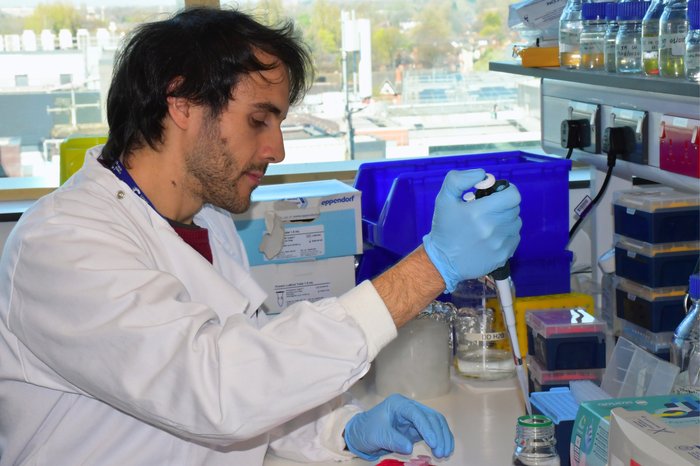Unlocking new hope: developing new, effective treatments for people with myeloma and AML
Myeloma and acute myeloid leukaemia (AML) are both types of blood cancers that start in the bone marrow and are challenging to treat. Dr Luciano Nicosia and his team are investigating a new drug to understand more about how and why it works, and if it can be a new way of treating some of the hardest to treat blood cancers.

Dr Luciano Nicosia
The challenge
Myeloma and AML are both types of blood cancers that start in the bone marrow, the spongy part inside some of our bones. Both conditions are challenging to treat, especially when all available treatment options have been explored. Researchers have discovered two proteins that play a key role in turning certain genes on or off, helping cancer cells grow. A new drug called CCS1477 has been extremely effective for some people by targeting these proteins, but it doesn’t work well for everyone.
The project
Dr Nicosia and his team want to understand why CCS1477is effective for some people but not for others. They want to understand who will benefit from receiving this drug and to understand how they might be able to make it even more effective. In their research they will explore how the drug works at a molecular level, this will help them understand how it stops cancer cells from growing. They also plan to test CCS1477 alongside existing drugs to find effective drug combinations that can be used in patients who are less likely to respond to CCS1477 drug on its own. Lastly, they will look at which proteins this drug interacts with so they can use this knowledge to understand new ways to target and treat AML and myeloma.
The future
If successful, this research could lead to the development of new, effective treatments for people with myeloma and AML who have limited further treatment options available. It could also reveal new combinations of drugs that offer more a more effective treatment option than using the CCS1477 drug alone. The increased understanding of proteins that are helping cancer cells to grow could also help in developing new ways to treat other types of blood cancers. Ultimately, this project could bring new hope to people with some of the hardest to treat blood cancers.
